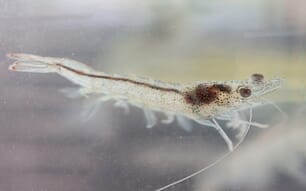Ms Legarda filed Senate Resolution 498 to direct the Senate Committees on Agriculture and Food, Environment and Natural Resources, and Climate Change to immediately conduct an inquiry on the matter as over 700 metric tons of milkfish and tilapia, worth approximately Php 57.226 million (US$1.3 million), have been killed in the different fish cages surrounding Taal Lake since 26 May.
Local newspapers have commented on the devastating scenes. Many described the lake as looking like milk due to the entire surface covered with floating dead milkfish.
"Both consumers and our fishermen are affected by this occurrence. The fishkill reportedly affected as much as 27 per cent of the fish supply of Metro Manila and will certainly affect majority of the fisherfolk from the lakeside communities of Taal who depend primarily on fishing for their subsistence," Ms Legarda explained.
So far, many reasons have been speculated for the fish kill. Ideas have included agricultural pollution, overcrowding and volcanic activity, due to Lake Taal's location within a caldera.
However, according to the Department of Environment and Natural Resources (DENR) and the Bureau of Fisheries and Aquatic Resources (BFAR) the fish kill was most likely caused by an overturn wherein moderate to heavy rains made the surface water of Taal Lake cold and dense, which in turn forced the deep hot bottom water containing pollutants to rise, heating the fish cages thereby depriving the fish of dissolved oxygen.
The BFAR also said that the recent fish kill in the Kakiputan Channel in Bolinao and Anda towns in Pangasinan was also caused by these changes in temperature.
"The sudden drop in temperature and the heavy rains, which led to the overturn may have been caused by the extreme shift of weather brought about by climate change. However, there have been reports to BFAR that the run-off from the Baleter River leading to Lake Taal was discoloured and contained animal waste," the Senator said.
"We have to determine the various and interrelated causes of this disastrous fish kill in order to protect our ecosystem, the livelihood of the communities surrounding these bodies of water, as well as the consumers who may be affected by the same," Ms Legarda concluded.
Other concerns, brought about following the massive fish kill, are into food safety. Many are concerned as to whether the dead fish may end up being sold on the market.
However, local newspapers have reported that fishermen have been urged to dispose of all fish in burial sites located in Talisay and in three other nearby towns. Rose del Mundo, of the Bureau of Fisheries and Aquatic Resources (BFAR), has also stated that selling of the fish is prohibited.





